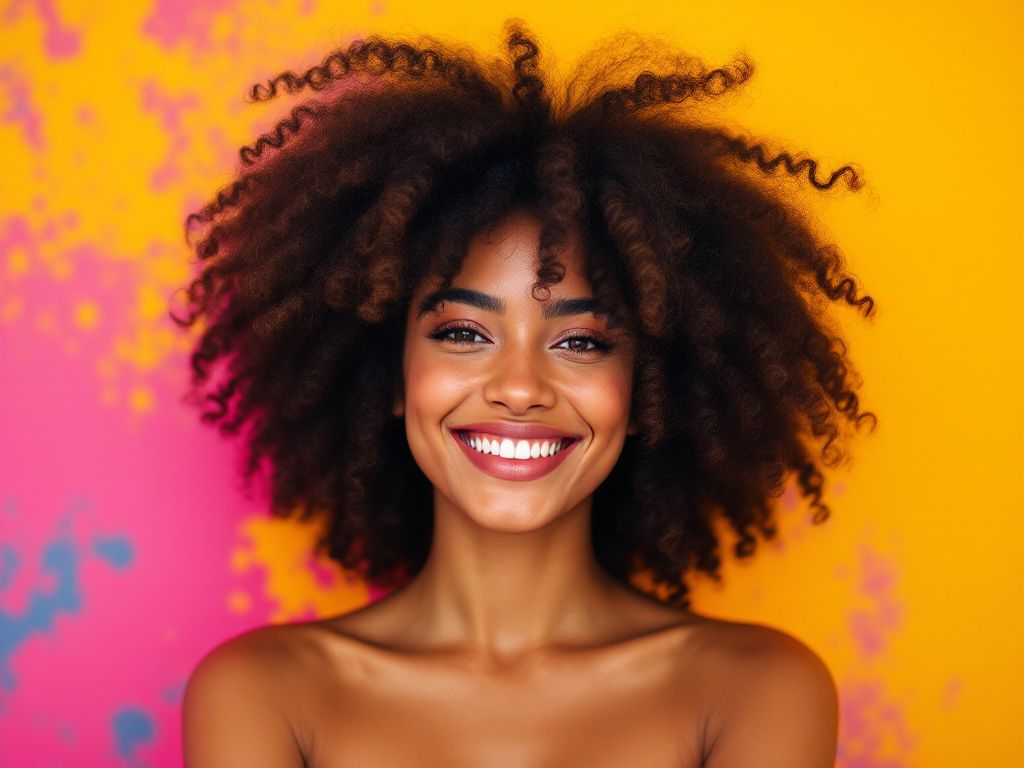
In recent years, the media landscape has undergone significant transformation, with representation of diverse beauty standards at the forefront. Curly hair, a symbol of diversity in beauty, has become a powerful element of identity for many individuals. However, did the media live up to its promise of inclusive portrayal of natural hair in 2025? Let’s dive into the progress and the persistent problems surrounding curly hair representation, targeting a rich blend of detailed cultural analysis, real-world examples, and actionable insights. 📚
Historical Context: A Brief Look Back
For decades, mainstream media predominantly featured straight hair as the pinnacle of beauty, often sidelining curly hair—a broad, beautiful spectrum of textures and styles—creating a singular narrative about what beauty looks like. The journey towards curly hair representation is not just about hairstyles; it encompasses deeper themes related to identity, ethnicity, and self-expression.
In the 1990s and early 2000s, shows like “Friends” and “Sex and the City” often portrayed characters with perfectly sleek, often straightened hair, setting a standard for viewers. Exceptions, such as Lisa Bonet in “The Cosby Show,” hinted at natural beauty but were rare. Fast forward to the present day, there is broader representation in media, showing curly hair in movies, television, and advertising. However, navigating this space requires a balanced view.
Current Landscape: Where Are We Now?
Visible Progress
- Diverse Characters on Screen: 🎬 Films like “Encanto” and animated shows such as “Moana” have confronted traditional beauty narratives by showcasing diverse hair textures, creating role models for children and adults alike. Characters adorned with flowing curls not only celebrate cultural diversity but highlight stories reflective of a variety of lived experiences.
- Influential Public Figures: Public figures such as Tracee Ellis Ross and Solange Knowles have become powerful advocates for natural hair. By consistently displaying their natural curls and speaking openly about their personal journeys, they challenge conventional beauty standards while encouraging self-love among followers.
- Brand Participation: Beauty brands have taken noticeable strides. Ad campaigns from companies like Dove have embraced natural hair, providing visibility and promoting inclusivity. Dove’s “Love Your Curls” campaign exemplifies strategic shifts, with initiatives aimed at creating products specifically for curly hair.
Persistent Problems
While progress is evident, challenges remain:
- Stereotyping and Typecasting: Curly-haired characters are sometimes typecast or used as visual shorthand for “quirkiness” or “rebelliousness.” For example, the trope of the ‘messy haired’ genius who doesn’t conform to society as noticed in shows with ‘academic outliers’ frequently use curls to symbolize non-conformity.
- Unequal Representation in Media Creators: Behind-the-scenes roles lack diversity. When decision-making positions, such as writers and directors, do not include diverse voices, portrayals of curly hair—and ethnic diversity they represent—inevitably fall short of a holistic reality.
Actionable Solutions and Best Practices
Encouraging Authentic Representation
1. Casting Choices and Storylines
**Do This**: Cast actors with authentic curly hair in roles that are not characterized by their hair type but rather by who they are holistically as characters. Ensure diversity is represented in everyday stories, not only films focused on cultural specificities.
**Not That**: Avoid tokenism—having a solitary character with curly hair in an otherwise homogenous cast does not constitute meaningful representation.
2. Behind-the-Scenes Inclusion
**Actionable Advice**: Encourage and support diverse creators. Directors and writers who understand the significance of diverse hair types must take the lead. It’s embraced within production companies as integral to comprehensive representation strategies.
Real-World Impacts: Economics of Acceptance
Research by Deloitte indicates significant purchasing power among culturally diverse groups who prioritize brands that reflect their values, including authentic representation. Embracing curly hair representation authentically is not only socially significant but financially viable, promoting brand loyalty and expansion into new markets.
Key Considerations and Common Mistakes
Common Mistakes to Avoid
- Ignoring Audience Input: Dismissing feedback from communities with curly hair can not only harm brand reputation but will likely miss emerging trends that reflect evolving consumer demands.
- Over-simplification: Oversimplifying curl patterns into monolithic categories can alienate those with intricate personal experiences. Brands should strive to understand and cater to a spectrum of curls and coils.
Expert Tips for Accurate Representation
- Collaboration with Experts: Adequate representation is often facilitated by consulting trichologists (hair specialists) and cultural experts during the scripting and designing processes. They infuse informed glimpses into characters’ lifestyle challenges and breakthroughs.
- Dynamic Storytelling Approaches: Stories should not just engage with dynamic characters but also address global stages and realistic challenges—school settings, workplaces, etc.—where curly hair perceptions might play a role influencing overall interaction.
- Empowering Influencers: Leveraging social media influencers who proudly promote natural hair can bolster campaigns. Partnerships should focus on authentic engagement, using them in designing richer content conducive to real movements.
Conclusion: Looking Forward – A Hopeful Future?
As we examine curly hair representation in media in 2025, the progress is marked but riddled with challenges needing resolution. The depth of stories, authenticity of portrayals, and genuine support of the curly community can define the cultural narratives of tomorrow.
Brands, creators, and audiences all play roles in shaping this promise—a pledge extending beyond visuals and steeped in recognition, respect, and visionary representation. Readers, take stock to question, engage, and action the examples of clarity and improvement you wish to see, ushering avenues where curls—like cultural identities—flourish unapologetically and influentially. 🎭
In striving towards this inclusive future, media showcases are not merely embracing curls—they cherish the manifold differences they embody in dialogues on screen and off. The end goal is representation that doesn’t only inspire but resonates akin to artistry reflecting on endless beauty extents, unashamedly diverse and genuinely proud.
Frequently Asked Questions
What are the benefits of using a hair mask in my hair care routine?
Using a hair mask can provide several benefits, including hydration, smoothing, strengthening, curl definition, heat protection, and damage repair. Hair masks infuse the hair with moisture, help coat the hair shaft to seal split ends, reduce breakage, and protect the hair from heat styling and environmental damage[1][4].
What ingredients should I look for in a hair mask?
Effective hair masks often include ingredients such as coconut oil, argan oil, shea butter, honey, avocado oil, green tea, and coconut water. These ingredients provide nourishment, moisturize, and protect the hair, offering benefits like softening, moisturizing, and protecting against damage[2][5].
How often should I use a hair mask in my routine?
You should use a hair mask whenever your hair feels dry, unmanageable, or in need of intense hydration. This can vary depending on your hair type and needs, but generally, using a hair mask once or twice a week can help maintain healthy and moisturized hair[1][4].
How do I apply a hair mask for the best results?
To apply a hair mask effectively, shampoo your hair first, then apply the mask, focusing especially on the ends where hair tends to be the most damaged. Leave the mask on for anywhere from 10 minutes to overnight, depending on the type of mask and your hair’s needs[1][4].
References


Leave a Reply